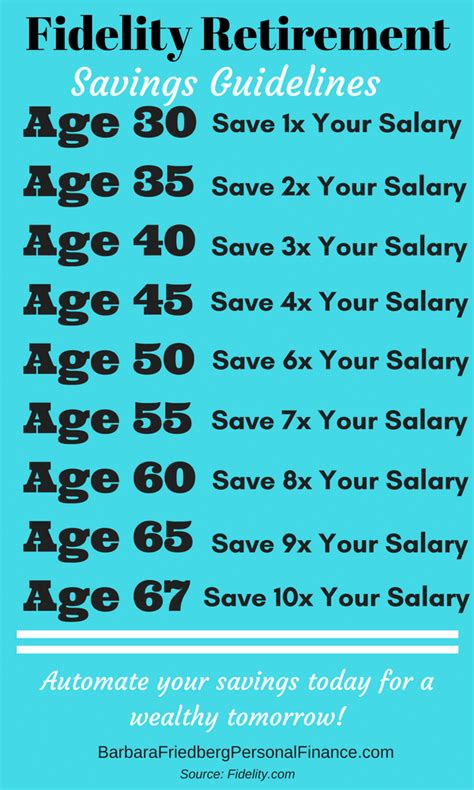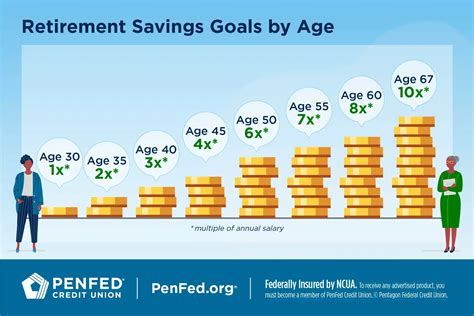
A Florida home, described as a potential “nightmare” due to its unconventional design, has languished on the market for 157 days, attracting only four potential buyers. The property, listed by Zillow, has sparked considerable online debate regarding its desirability and market appeal, highlighting the challenges sellers face when marketing unique or polarizing real estate.
A peculiar Florida property, sitting unsold for over five months, illustrates the fine line between architectural innovation and marketability. Listed on Zillow, this single-family home has been available for 157 days as of this week, garnering minimal interest with a mere four views, as reported by Yahoo Finance. The lackluster reception underlines the critical importance of understanding buyer preferences and local market dynamics in real estate.
The house’s stagnant listing period and scant attention have made it a subject of discussion among real estate professionals and potential buyers. Its design elements, which deviate significantly from conventional Florida homes, appear to be a major contributing factor to its struggle to attract offers. The situation raises broader questions about the risks associated with unique architectural choices in residential real estate and the potential challenges of selling homes that do not align with mainstream tastes.
According to Zillow data, the typical home in Florida spends considerably less time on the market, emphasizing how atypical this particular case is. The median time on the market for homes in Florida is significantly shorter, underscoring the unique challenges this property presents. While specific data fluctuates based on location and market conditions, homes generally sell much faster, pointing to specific issues related to the property itself rather than broader market slowdowns.
The unusual design, although not detailed specifically in the Yahoo Finance article, has been alluded to as a potential deterrent. The lack of specific information about the design leaves room for speculation but also highlights the importance of visual appeal in real estate marketing. Without clear images and descriptions of the home’s interior and exterior, potential buyers are left to imagine the worst, impacting interest and viewings.
Real estate agents often emphasize the importance of staging and marketing to appeal to a broad audience. Properties that cater to niche tastes or feature unconventional designs require tailored strategies to attract the right buyers. This may involve highlighting unique selling points while addressing potential concerns related to functionality or aesthetic preferences.
The limited attention this property has received also raises questions about the effectiveness of its marketing strategy. In today’s digital age, high-quality photos, virtual tours, and targeted advertising are essential for capturing buyer interest. A lack of compelling marketing materials can significantly reduce visibility and limit the pool of potential buyers.
One real estate analyst noted, “In a market where buyers have numerous options, properties need to stand out for the right reasons.” This suggests that while uniqueness can be an asset, it must be balanced with features that appeal to a broad range of buyers. The key is to showcase a property’s unique attributes while addressing practical considerations such as layout, functionality, and overall aesthetic appeal.
The case also underscores the role of pricing in attracting buyers. While the article does not explicitly mention the price, it is likely a factor in the property’s slow sales. Overpricing can deter potential buyers, particularly in a competitive market. A realistic assessment of the property’s value, considering its unique features and potential drawbacks, is crucial for generating interest and driving offers.
The “nightmare” description suggests significant reservations about the property’s condition or layout. Such a negative perception can be difficult to overcome, even with price reductions or marketing efforts. Addressing any underlying issues, such as needed repairs or unconventional design flaws, is essential for improving the property’s marketability.
The slow sales of this Florida home serve as a cautionary tale for sellers considering unconventional design choices. While personal preferences are important, it’s crucial to consider the potential impact on resale value. Consulting with real estate professionals and understanding local market trends can help sellers make informed decisions that maximize their investment.
This situation also highlights the increasing role of online platforms like Zillow in shaping buyer perceptions. Online listings are often the first point of contact for potential buyers, making it essential to present properties in the best possible light. High-quality photos, detailed descriptions, and virtual tours can significantly enhance a property’s appeal and attract more viewings.
Furthermore, the story underscores the importance of understanding target demographics. Different buyer groups have varying preferences and priorities. A property that appeals to one demographic may not resonate with another. Tailoring marketing efforts to specific buyer groups can increase the likelihood of finding the right buyer.
In conclusion, the case of the Florida home that has remained unsold for 157 days with only four views illustrates the complex interplay of design, marketing, pricing, and buyer preferences in real estate. It serves as a valuable lesson for sellers and real estate professionals alike, highlighting the importance of understanding market dynamics and adapting strategies to meet the needs of potential buyers. The property’s prolonged market presence underscores the challenges of selling homes that deviate significantly from conventional standards and the need for a comprehensive approach to marketing and pricing.
Expanded Analysis and Context:
To further understand the situation surrounding this unsold Florida home, it’s crucial to delve into the various factors that contribute to a property’s marketability. These factors include architectural design, location, market conditions, pricing strategy, marketing efforts, and overall economic climate. Each of these elements plays a crucial role in determining how quickly a property sells and the final sale price.
Architectural Design and its Impact:
The architectural design of a home is often one of the primary factors that influence buyer interest. While innovative and unique designs can be appealing, they also carry the risk of polarizing potential buyers. Homes that deviate significantly from conventional styles may appeal to a niche market but may be less attractive to a broader audience.
In the case of the Florida home, the “nightmare” description suggests that the design may be a significant deterrent. Without specific details about the design, it’s difficult to pinpoint the exact reasons for the negative perception. However, potential issues could include an unconventional layout, unusual materials, or a design that is not well-suited to the Florida climate.
Homes with unconventional layouts, such as those with oddly shaped rooms or limited natural light, may be less appealing to buyers who prioritize functionality and practicality. Similarly, the use of unusual materials or color schemes can create a polarizing effect, with some buyers finding them appealing while others find them off-putting.
The design’s suitability for the Florida climate is also a crucial consideration. Homes in Florida need to be designed to withstand extreme heat, humidity, and occasional hurricanes. Designs that do not adequately address these factors may be less appealing to buyers who are concerned about comfort and durability.
Location, Location, Location:
Location is a fundamental factor in real estate. A desirable location can significantly increase a property’s value and marketability, while an undesirable location can make it difficult to sell, regardless of the property’s features.
The Yahoo Finance article does not provide specific details about the location of the Florida home. However, factors such as proximity to amenities, schools, and transportation can all influence buyer interest. Homes located in desirable neighborhoods with good schools and easy access to amenities tend to sell more quickly and at higher prices.
Conversely, homes located in less desirable areas, such as those with high crime rates or limited access to amenities, may be more challenging to sell. Environmental factors, such as proximity to industrial areas or busy roads, can also negatively impact a property’s value.
Market Conditions and Economic Climate:
The overall market conditions and economic climate play a significant role in the real estate market. In a strong market, where demand exceeds supply, homes tend to sell quickly and at higher prices. Conversely, in a weak market, where supply exceeds demand, homes may take longer to sell and may require price reductions to attract buyers.
The current state of the Florida real estate market is an important consideration in understanding the challenges faced by this particular property. Factors such as interest rates, employment rates, and consumer confidence can all influence buyer behavior.
Rising interest rates can make it more expensive for buyers to finance a home, potentially reducing demand. High unemployment rates can also dampen buyer confidence, as people may be less willing to make a major purchase during times of economic uncertainty.
Pricing Strategy:
The pricing strategy is a crucial element in attracting buyers. Overpricing a property can deter potential buyers, while underpricing it can leave money on the table. A realistic assessment of the property’s value is essential for generating interest and driving offers.
The Yahoo Finance article does not mention the price of the Florida home. However, it is likely a factor in its slow sales. If the property is overpriced relative to its features and location, it may not attract buyer interest, regardless of its other attributes.
Determining the appropriate price for a property requires careful analysis of comparable sales in the area, as well as consideration of the property’s unique features and potential drawbacks. Real estate agents can provide valuable guidance in this process, helping sellers to arrive at a price that is both competitive and realistic.
Marketing Efforts:
Effective marketing is essential for attracting buyers to a property. In today’s digital age, high-quality photos, virtual tours, and targeted advertising are crucial for capturing buyer interest.
The Yahoo Finance article suggests that the marketing efforts for the Florida home may be lacking. The fact that it has only attracted four views in 157 days indicates that it is not reaching a wide enough audience.
High-quality photos are essential for showcasing a property’s best features. Virtual tours allow potential buyers to explore the property remotely, which can be particularly helpful for out-of-state buyers. Targeted advertising can help to reach specific buyer groups who may be interested in the property.
Overcoming the Challenges:
To improve the marketability of the Florida home, several steps could be taken:
- Address Design Flaws: If the “nightmare” description is accurate, addressing any underlying design flaws or structural issues is crucial. This may involve renovations, repairs, or modifications to improve the property’s functionality and appeal.
- Improve Marketing: Enhancing the marketing efforts with high-quality photos, virtual tours, and targeted advertising can help to reach a wider audience. Highlighting the property’s unique features while addressing potential concerns can also be effective.
- Adjust Pricing: A realistic assessment of the property’s value and a price adjustment may be necessary to attract buyer interest. Analyzing comparable sales and considering the property’s unique features and drawbacks can help to determine an appropriate price.
- Stage the Property: Staging the property can help to showcase its potential and create a more inviting atmosphere. This may involve decluttering, rearranging furniture, and adding decorative touches to make the property more appealing to buyers.
- Seek Professional Advice: Consulting with real estate professionals can provide valuable insights and guidance. Real estate agents can offer advice on pricing, marketing, and staging, as well as provide feedback from potential buyers.
The Role of Online Platforms:
Online platforms like Zillow play an increasingly important role in the real estate market. These platforms provide buyers with access to a vast array of listings and allow them to easily compare properties and research neighborhoods.
The fact that the Florida home is listed on Zillow is both an advantage and a disadvantage. On the one hand, it provides exposure to a large audience of potential buyers. On the other hand, it also means that the property is subject to scrutiny and comparison with other properties on the market.
To succeed on these platforms, it’s essential to present properties in the best possible light. High-quality photos, detailed descriptions, and virtual tours can significantly enhance a property’s appeal and attract more viewings. It’s also important to respond promptly to inquiries and provide accurate information about the property.
Lessons Learned:
The case of the Florida home that has remained unsold for 157 days with only four views provides several valuable lessons for sellers and real estate professionals:
- Design Matters: Architectural design can have a significant impact on a property’s marketability. Unique designs can be appealing, but they also carry the risk of polarizing buyers.
- Location is Key: Location is a fundamental factor in real estate. A desirable location can significantly increase a property’s value and marketability.
- Marketing is Essential: Effective marketing is crucial for attracting buyers to a property. High-quality photos, virtual tours, and targeted advertising can make a big difference.
- Pricing is Critical: The pricing strategy is a crucial element in attracting buyers. A realistic assessment of the property’s value is essential.
- Adaptability is Important: The real estate market is constantly evolving. Sellers and real estate professionals need to be adaptable and willing to adjust their strategies to meet changing market conditions.
Frequently Asked Questions (FAQ):
-
Why has this Florida home been on the market for so long?
- The property has been listed for 157 days with only four views, primarily due to its potentially unconventional design, as alluded to in the “nightmare” description, which may not appeal to a broad range of buyers. Other factors could include its location, pricing strategy, and the effectiveness of its marketing efforts.
-
What does the term “nightmare” imply about the property?
- The term “nightmare” suggests significant reservations about the property’s condition, layout, or overall design. This could indicate structural issues, an impractical floor plan, an unattractive aesthetic, or a combination of these factors.
-
How important is the design of a home in attracting buyers?
- Design is a crucial factor. While unique designs can be appealing, they can also polarize buyers. Homes that deviate significantly from conventional styles may appeal to a niche market but may be less attractive to a broader audience, impacting the time it takes to sell.
-
What marketing strategies could help sell this difficult property?
- Improved marketing strategies could include: High-quality professional photos showcasing the property’s best features (or addressing its issues transparently), virtual tours allowing remote exploration, targeted advertising to reach specific buyer demographics who might appreciate the unique aspects, and a compelling narrative that highlights the property’s potential (if any).
-
Is the price of the home contributing to its lack of interest?
- It is highly probable that the price is a contributing factor. If the property is overpriced relative to its features, location, and condition, it will deter potential buyers. A realistic assessment of the property’s value, considering its unique attributes and drawbacks, is crucial for generating interest and driving offers.
Additional Information and Contextual Expansion:
The plight of this Florida home serves as a microcosm of the broader challenges and intricacies within the real estate market. Beyond the immediate factors affecting this specific listing, a deeper examination reveals underlying trends and considerations that influence property sales across various demographics and geographic locations.
The Psychology of Homebuying:
Purchasing a home is one of the most significant financial decisions most people make. It’s not solely a rational choice based on numbers and square footage; it’s deeply intertwined with emotions, aspirations, and lifestyle considerations. The “nightmare” label attached to this property triggers negative emotional responses, creating an immediate aversion in potential buyers. Overcoming such a perception requires a strategic approach that addresses the underlying concerns and replaces them with positive associations.
The Role of Curb Appeal and First Impressions:
The first impression a property makes is crucial. “Curb appeal” – the attractiveness of a property from the street – can significantly influence a buyer’s decision to even consider a closer look. A neglected exterior, overgrown landscaping, or a drab façade can deter potential buyers before they even step inside. If the “nightmare” description extends to the exterior appearance, it’s imperative to address these issues to create a more welcoming and appealing first impression.
The Impact of Interior Design and Staging:
Interior design and staging play a pivotal role in showcasing a property’s potential. Even a structurally sound home with a functional layout can be hindered by outdated décor, cluttered spaces, or a lack of cohesive design. Staging involves arranging furniture, accessories, and décor to create an inviting and aspirational atmosphere that resonates with potential buyers. A well-staged home allows buyers to envision themselves living in the space and helps them overlook minor imperfections.
Understanding the Target Demographic:
Every property appeals to a specific target demographic. Identifying this demographic is crucial for tailoring marketing efforts and highlighting features that are most relevant to their needs and preferences. For example, a family-friendly home in a suburban neighborhood might emphasize features like a spacious backyard, proximity to good schools, and a safe environment. Conversely, a modern condo in an urban setting might focus on amenities like a fitness center, rooftop terrace, and easy access to restaurants and entertainment. Understanding the target demographic allows sellers to effectively communicate the property’s value proposition.
The Importance of Transparency and Disclosure:
Transparency and disclosure are paramount in real estate transactions. Hiding or downplaying potential issues can lead to legal complications and damage the seller’s reputation. Buyers appreciate honesty and are more likely to trust a seller who is upfront about any known defects or challenges. Addressing potential concerns proactively can build trust and facilitate a smoother transaction.
Leveraging Technology and Virtual Tours:
In today’s digital age, technology plays a crucial role in the real estate market. Virtual tours, high-quality photos, and interactive floor plans allow potential buyers to explore properties remotely, saving time and effort. These tools are particularly valuable for out-of-state buyers or those with busy schedules. Leveraging technology can expand the reach of a listing and attract a wider pool of potential buyers.
The Power of Storytelling and Emotional Connection:
Effective marketing goes beyond simply listing features and specifications. It involves crafting a compelling narrative that connects with potential buyers on an emotional level. Highlighting the history of the property, sharing anecdotes about the neighborhood, or emphasizing the unique lifestyle it offers can create a sense of connection and make the property more memorable. Storytelling can transform a generic listing into a captivating narrative that resonates with buyers’ aspirations and emotions.
Addressing Negative Perceptions and Misconceptions:
The “nightmare” label attached to this Florida home has created a negative perception that needs to be addressed. This requires a strategic approach that confronts the underlying concerns and replaces them with positive messages. This might involve highlighting the property’s potential for renovation, emphasizing its unique architectural features, or showcasing its affordability compared to other properties in the area. Addressing negative perceptions head-on can help to overcome buyer resistance and generate renewed interest.
The Value of Professional Real Estate Expertise:
Navigating the complexities of the real estate market requires expertise and experience. A professional real estate agent can provide valuable guidance and support throughout the selling process, from pricing the property to negotiating offers. An agent can also help to identify potential challenges, develop a marketing strategy, and ensure that all legal and regulatory requirements are met. Engaging a skilled real estate professional can significantly increase the chances of a successful sale.
The Impact of Economic Factors and Market Trends:
Economic factors and market trends play a significant role in the real estate market. Interest rates, unemployment rates, inflation, and consumer confidence can all influence buyer behavior. Staying informed about these trends and adapting strategies accordingly is crucial for success. In a fluctuating market, flexibility and adaptability are key to navigating challenges and maximizing opportunities.
Beyond the Sale: Building Long-Term Relationships:
Real estate transactions are not simply about buying and selling properties; they are about building long-term relationships. Providing exceptional service, maintaining open communication, and fostering trust can create lasting connections with clients. Positive word-of-mouth referrals can be invaluable for building a successful real estate business.
By understanding these broader trends and considerations, sellers and real estate professionals can navigate the complexities of the market and maximize their chances of success. The case of the unsold Florida home serves as a reminder of the importance of addressing challenges proactively, leveraging expertise, and building strong relationships. The property is a reminder that a successful sale requires a combination of strategic planning, effective marketing, and a deep understanding of buyer psychology.









